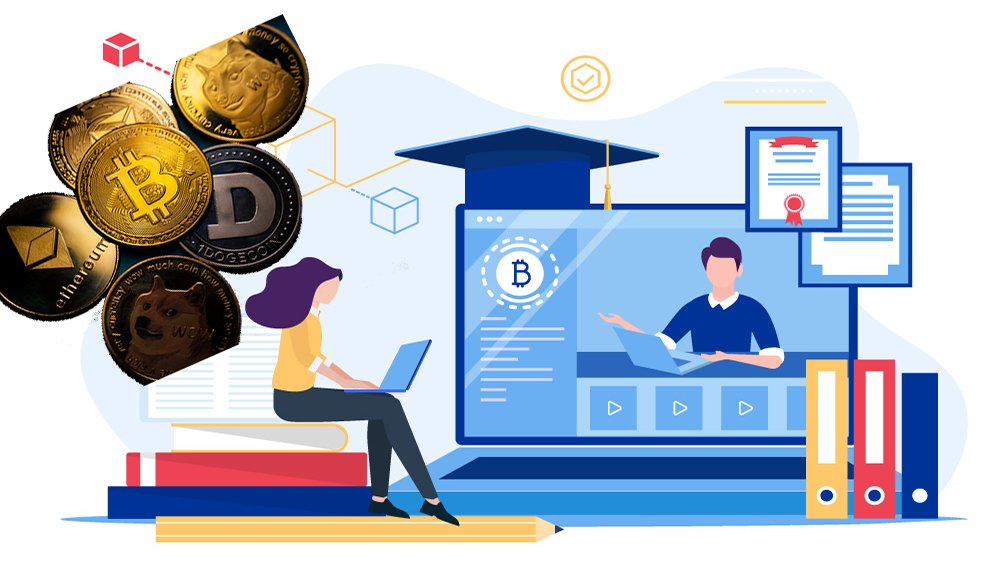By: Husam Yaghi
The world of finance is rapidly evolving, with cryptocurrencies and blockchain technology poised to play an increasingly significant role. To prepare students for this future, it’s crucial to integrate these concepts into K-12 education. While some may view cryptocurrency as a complex or even risky topic, its underlying principles offer valuable lessons in financial literacy, technology, and the evolving nature of money.
Why Teach Cryptocurrency in K-12?
- Relevance: Cryptocurrency is no longer a niche technology. It’s making headlines, influencing global markets, and sparking conversations about the future of money. Introducing these concepts early ensures students are informed participants in this evolving landscape.
- Engaging Entry Point: Cryptocurrency, with its digital nature and connection to online communities, can be a highly engaging topic for young learners. It can spark curiosity about finance and technology, making learning more interactive and fun.
- Foundation for Future Skills: As blockchain technology expands beyond cryptocurrency, understanding its core principles will be increasingly valuable in various fields, from finance and supply chain management to healthcare and government.
Age-Appropriate Approaches:
Integrating cryptocurrency into K-12 education doesn’t mean expecting young children to become crypto traders. Instead, it’s about introducing age-appropriate concepts and activities that build a foundational understanding.
Elementary School:
- Digital Money: Introduce the concept of digital currencies alongside traditional forms of money. Explain how we use online payment platforms and apps to transact.
- Virtual Economies: Use online games with virtual currencies and economies (like those found in Roblox or Minecraft) to illustrate basic economic principles like supply and demand, earning, and spending.
Middle School:
- Blockchain Basics: Explain the concept of a blockchain as a digital ledger. Use simple analogies, like a shared online record book, to illustrate how transactions are recorded and verified.
- Cryptocurrency Concepts: Introduce popular cryptocurrencies like Bitcoin and Ethereum. Discuss their purpose, how they are created, and the technology behind them.
- Cybersecurity Awareness: Emphasize the importance of online safety and responsible digital citizenship, particularly when dealing with digital currencies and online transactions.
High School:
- Deeper Dive into Blockchain: Explore different types of blockchains and their applications beyond cryptocurrency, such as supply chain tracking, digital identity, and voting systems.
- Cryptocurrency and the Economy: Discuss the potential benefits and risks of cryptocurrency, its impact on financial systems, and its role in the global economy.
- Ethical Considerations: Engage students in critical discussions about the ethical implications of cryptocurrency, including its environmental impact, potential for illicit activities, and regulatory challenges.
Examples of Engaging Activities:
- Simulations: Use online simulators to allow students to experience trading or managing a virtual portfolio of cryptocurrencies.
- Interactive Games: Develop games that teach about blockchain concepts, such as mining, transaction verification, and smart contracts.
- Research Projects: Assign projects where students research and present on different cryptocurrencies, blockchain use cases, or the future of digital finance.
- Guest Speakers: Invite professionals working in the blockchain and cryptocurrency space to share their experiences and insights with students.
Addressing Concerns:
- Volatility: Address the volatile nature of cryptocurrency markets and emphasize that it’s not suitable for everyone.
- Risk Management: Teach students about responsible investing, risk assessment, and the importance of conducting thorough research before making any financial decisions.
- Regulation: Discuss the evolving regulatory landscape surrounding cryptocurrency and the importance of understanding and complying with relevant laws.
By thoughtfully integrating cryptocurrency and blockchain concepts into K-12 education, we can empower students with the knowledge and skills to navigate the future of finance. This approach will foster a generation of informed citizens, savvy investors, and innovative thinkers prepared to embrace the opportunities and challenges of a rapidly evolving digital world.
Disclaimer: “This blog post was researched and written with the assistance of artificial intelligence tools.”


